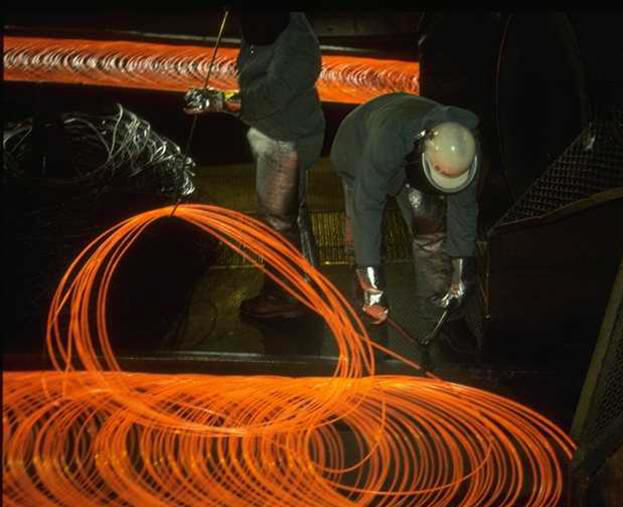 |
 |
| Heavy, exhausting work: Metabolic Load | Writer’s Cramp: Static Load |
Preventing fatigue has long been a major focus of ergonomics and methods engineering.
Production issues
There is a direct link between fatigue and lowered productivity. Furthermore, overloaded physical and mental capabilities can increase the risk of errors of all types, including product defects and interruption of production.
In the special case of fatigue caused by using the hand as a fixture to hold an item being worked on, that
Employee Well-Being
Fatigue in and of itself constitutes a lessening of well-being. Furthermore, overloaded physical and mental capabilities can contribute to accidents. Additionally, static load on muscles can contribute to musculoskeletal disorders.
Strategies for improvement
Metabolic Load vs. static load
Reduce force and duration
Fixtures
Self-closing tools
Straps
Armrests
Footrests
Hooks and holders
Measurements
Other
Metabolic load vs. static load
Traditionally, the concern was for heavy, exhausting work (called “metabolic” load because of high metabolism: sweating and burning calories). This type of work steadily diminished during the 20th Century, although is still a factor in many jobs.
A more recent concern is overloading specific muscle groups because of holding the same position for a period of time (called “static” load, i.e. not moving). You don’t sweat or burn calories, but it is fatiguing nonetheless. This type of work steadily increased during the 20th Century.
Static load is especially stressful in combination with high force and awkward posture, but the primary concern is the amount of time that the muscles are contracted. Even if a muscle is only lightly tensed, with enough time, it can result in pain and fatigue.
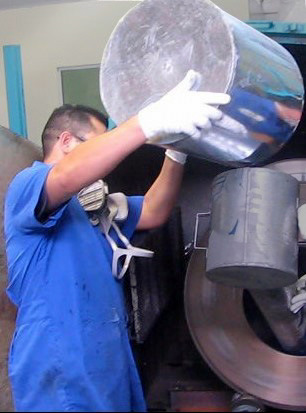 |
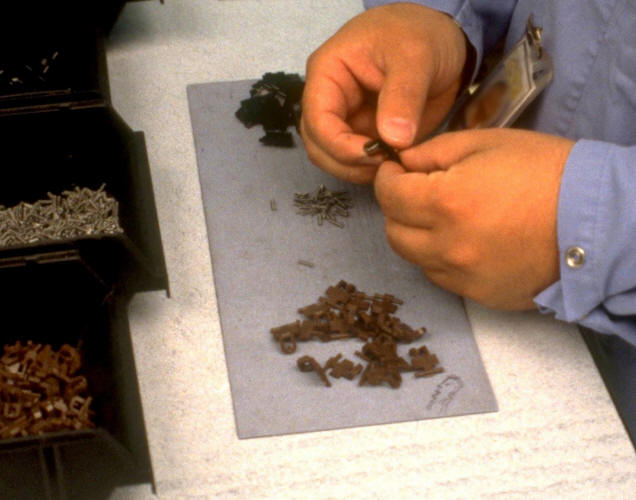 |
| A few minutes, awkward position with heavy load | Large portion of workday with fingers lightly pinched |
In the past, static load generally referred to a continuous period of time before the onset of fatique. Currently, the use has expanded to include situations where a large portion of the day involves use of the same muscle groups.
Reduce force and duration
A good example of static load that everyone has experienced is writer’s cramp. You do not need to hold on to a pencil very hard, just for long periods. Your muscles tire after a time and begin to hurt. Prevention of writer’s cramp includes: (1) stopping occasionally to stretch, and (2) using a pencil grip, which makes it easier to hold (it reduces slipperiness, plus increases size).
Use fixtures
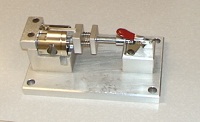 |
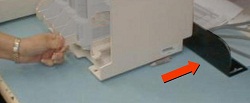 |
| Classic bench fixture | Simple backstop |
It is crucial to use fixtures, clamps, or some other way to prevent static grasping of items, whether a part, a tool, or both, if possible. Don’t use your hand as a fixture. See Workstations: Benchtop fixtures, Freestanding fixtures.
Use self-closing tools
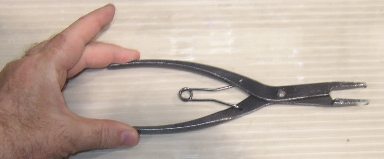 |
| Self-closing pliers |
Pliers, tweezers, and clamping tools are available that involves squeezing to open up the tool, then letting go to hold it in place. This eliminates the need to grasp continually. Locking pliers provide a different version of the same concept, as does a locking trigger on a power tool. See Hand tools:Handheld fixtures
Use straps
 |
 |
 |
| Horse brush | Scanner strapped to the hand | Strap for paint pail |
Straps have traditionally been used on horse brushes to relieve strain on the hand. The technique can be used on other tools that are held for long periods. For example, strapped on scanners are now available from several vendors. See Hand tools: Straps
Use armrests
 |
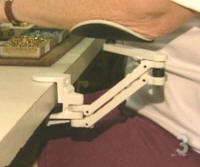 |
| Simple ledge | Bench-mounted articulating armrest |
Armrests eliminate static load on the shoulder in tasks that require outstretched arms. New types of armrests can be attached to the workbench or machine. See Workstations: Arm supports
Use footrests
 |
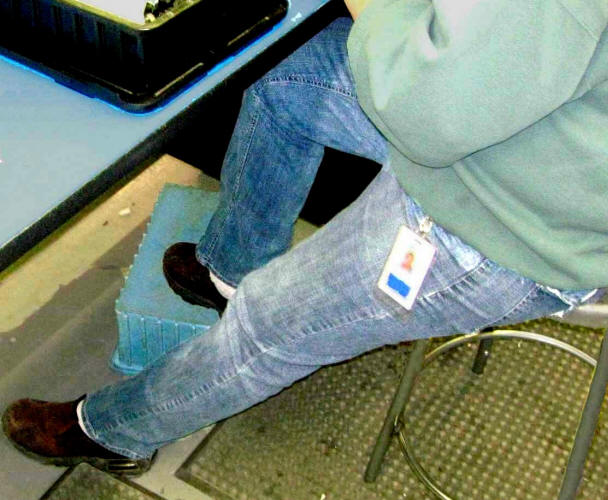 |
Having a footrest available provides a chance to alternate postures occasionally, especially for standing jobs. See Workstations: Footrests
Holders and hooks
 |
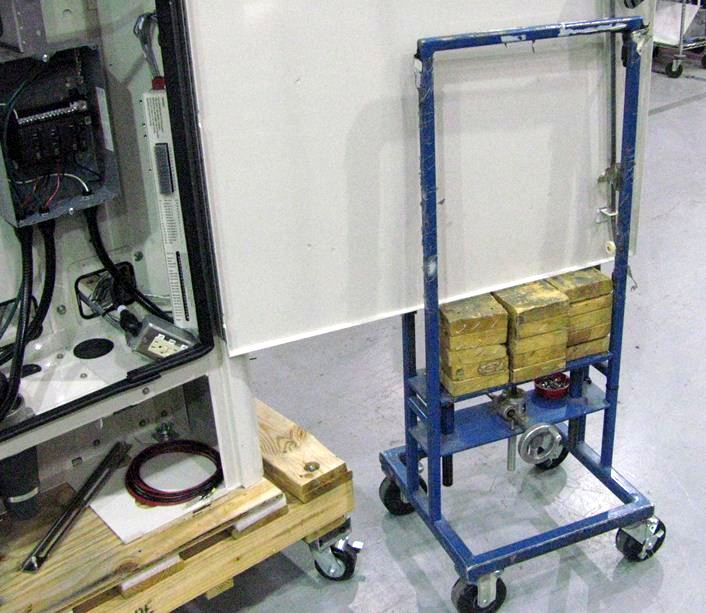 |
| Gasoline nozzle | Door holder |
One of the most common examples of a holder to eliminate static load is the latch on a gasoline nozzle. The concept is similar to many other uses, such as the trigger lock on power drills.
Another type of holder is shown in the photo above left. In a plant that assembles large electrical panels, the cart and stack of wood blocks is used to hold the door in place while it is being attached. Any number of adaptations of this idea can be used to eliminate the need to hold an item in position for a period of time.
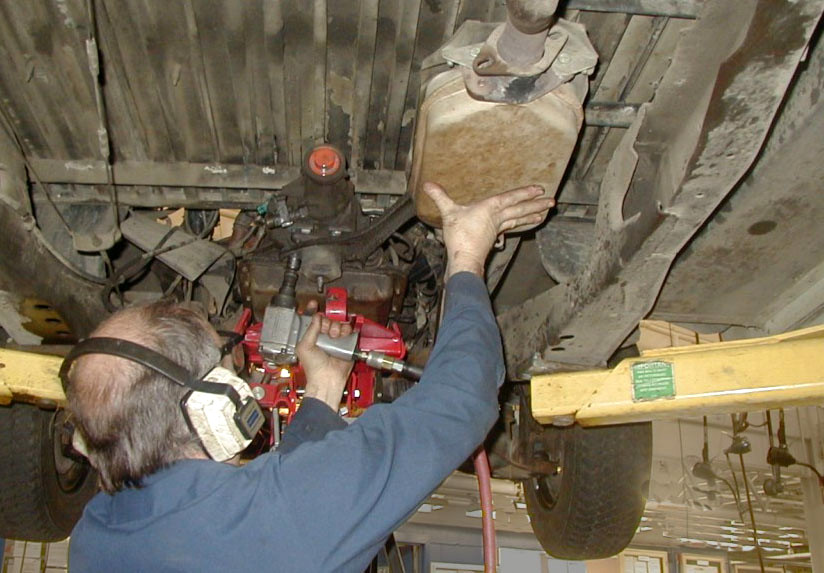 |
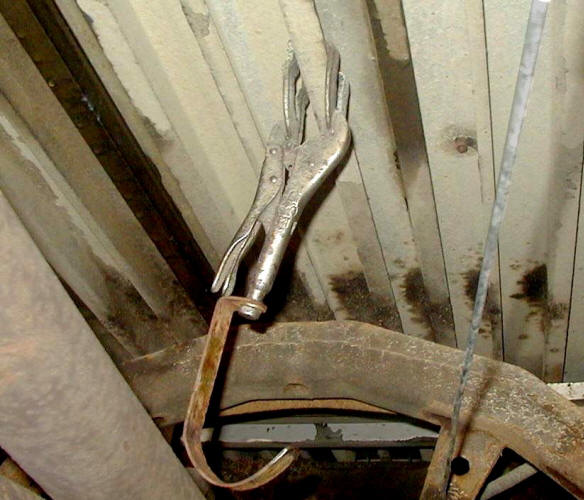 |
| Before: Hold catalytic converter with hand | After: Hook for exhaust system |
This example shows an adaption of the concept of holding. At left, the mechanic needs to hold the exhaust system of a vehicle in place while removing the fasteners. The work must therefore be done with only one hand, which can be difficult and frustrating along with slowing down the job. Furthermore, the the time required to hold everything in place is fatiguing for the arm, in this case made worse by the weight of the catalytic converter and the extended position of the arm.
By using a simple homemade hook, the exhaust system is held in place. Both hands are available for production, which in this case reduced removal time by about 40%, and there is less fatigue on the arm.
Measurements
Other:
- Heart rate monitors can be used to measure metabolic load.
- Electromyography (EMG) is a laboratory test that can also be used to study local muscle fatigue.
